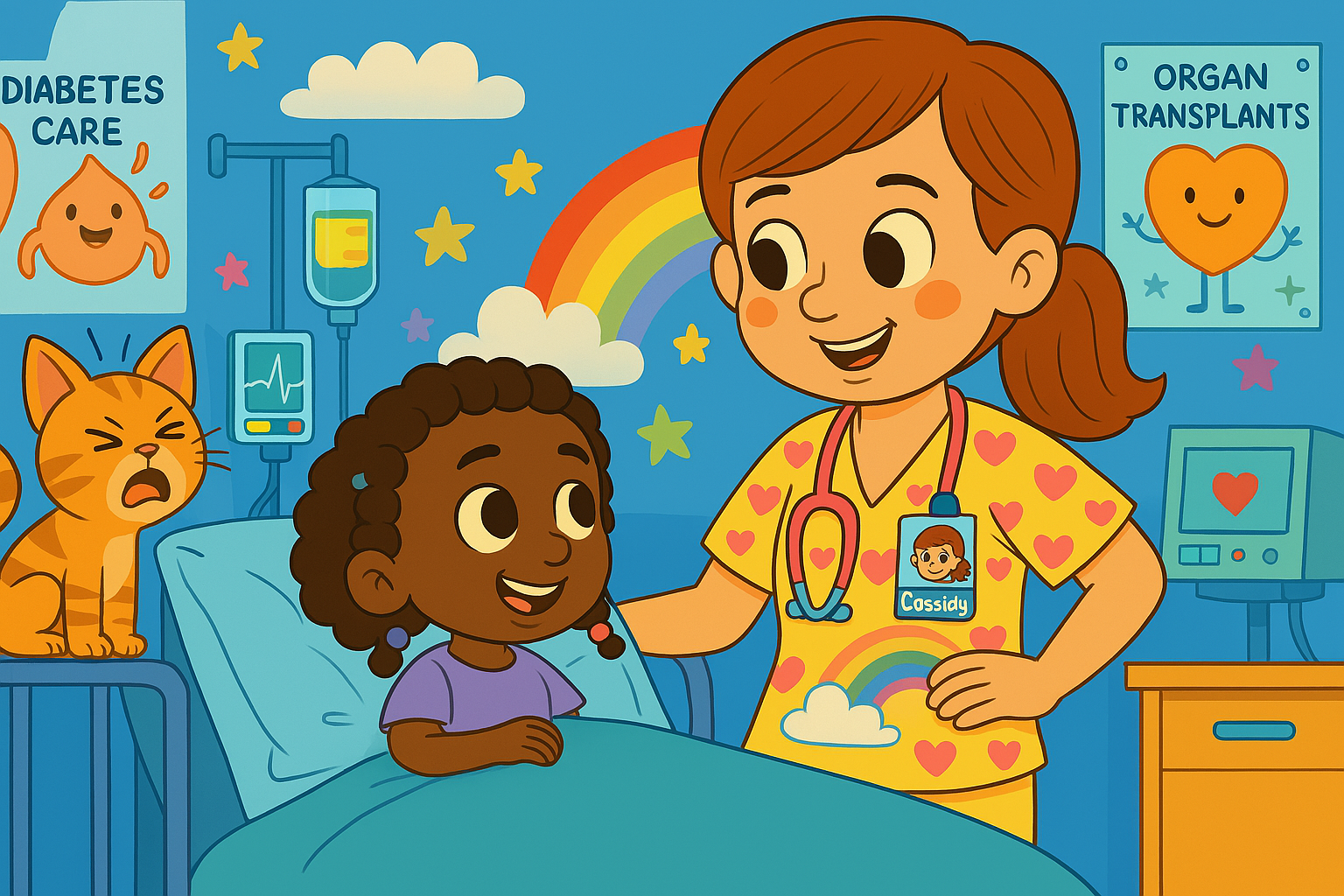Companion to ep #503: Manitoba Strikes Back
By Trevor Kirczenow
This post is for folks who are interested in grassroots diabetes advocacy. A group of us began advocating in Manitoba, Canada, in December 2020. In less than six months, we went from having ZERO public coverage for continuous glucose monitors (CGMs), to an announcement in the Provincial Budget promising coverage for CGMs up to age 25, and an expansion of insulin pump coverage from age 18 to 25. Before we started, our politicians didn’t know what a CGM was.
Here’s how we did it.
Our movement is entirely based in the local community, not filtered through any larger diabetes organizations. We found each other through a Manitoba type 1 Facebook group. A few brave people decided to talk to the media about their struggles to afford their diabetes supplies due to Covid job losses. This first news story helped others realize they were not alone in facing these challenges. More people felt empowered to speak out.
We started a Facebook page, Emergency Diabetes Support for Manitobans, where we began sharing personal stories. We networked with opposition politicians first, who told us we needed to get as much public support and media coverage for our issue as possible.
TIP: Opposition politicians (those belonging to the party not currently in power) have a lot more time to respond to their constituents than government ones do, so they can be a great place to start with your advocacy work. They can help you out by raising issues on your behalf in the Legislature, writing formal letters to politicians in power, posting on social media to raise awareness, and assisting you in navigating the government system.
Getting Media Coverage
One media article was great, but we learned we would need a LOT more to make any difference. Politicians pay attention to media coverage. Media like to have a specific hook or angle - a reason to cover an issue right now. Diabetes coverage has been a problem for a long time. Why should they pay attention to it at this particular moment?
So, we came up with some reasons. We created events, and sent out press releases about them to all the media in our province. We tried to make every event educational and positive in order to gain support for our cause. We featured people from different regions so that small, community newspapers would pick up our stories, as well as the larger outlets. Local papers want to feature locals.
News editors are always looking for content, and yet today there are fewer journalists than ever before. This means that if you can write a good press release, it may simply be picked up and run, as is (without anyone even telling you!). Try to write in a typical news-y style. Include a personal story or two, with quotes from affected individuals. Provide accurate background information like a newspaper would (e.g., explain in a sentence or two what a CGM is). Attach a relevant image.
All of our group’s press releases got picked up by at least one news outlet. This is one example where our press release was used in full by the Virden Empire-Advance online.
Creating Events
Our first event was the Great Manitoban Fingerprick Challenge. My son’s pharmacist donated new fingerprick test kits for our politicians to use. We wrote instructions and made a video for the politicians so they would understand when and why they should test. The challenge was for them to test 10 times in one day. Feel free to download the instructions and use them in your own challenge in your region.
About 15 politicians participated in the challenge. Many of them posted videos to social media.
The fingerprick challenge gave us another great excuse to email and phone our politicians, and to email and phone them again to follow-up. “Would you like to do the challenge?” we asked. “Did you receive your kit?” “Do you have any questions about using the kit?” Have you tried your challenge yet?”
Each conversation was an opportunity for a little more education. Conversations with the politicians’ staff are very important, because staff can bring something to the politician’s attention, i.e. they can put YOUR email on the top of the stack of emails the Minister (or Secretary, if you’re in the US) is supposed to look at. It might take a dozen phone calls before you get a response, but (polite) persistence is key.
When the fingerprick challenge had mostly run its course, we came up with the “Antique Diabetes Roadshow”, to demonstrate how antiquated fingerpricking is compared to CGM. Then we did the “Amazing Race for Diabetes Coverage”, to show how our province was well behind the rest of the country in terms of public coverage. Next, we did “Rolling the Dice on Diabetes” to educate about the chances of developing diabetes complications or having a low or high (DKA) blood sugar emergency. After that, we created “Jumping Through Hoops for Diabetes Coverage” to show how hard it can be to qualify for an insulin pump under the current public program.
Media showed up at and covered each event. Politicians from every party joined us as well. We had established a light-hearted and friendly – though persistent – style of advocacy. Politicians were not scared that we were going to yell at them or embarrass them, so they were willing to engage and learn.
Volume is Important
A politician can ignore an occasional email or phone call about an issue, but it’s harder to ignore a flood of messages, especially if you think you’d like to get re-elected. Our group members asked all of their friends and family to email and call their representatives. The messaging was simple. We told them to say things like, “I’m a friend of Matthew, a 10-year-old boy who lives with type 1 diabetes. His continuous glucose monitor (CGM) keeps him safe, and that’s important to me. These devices should be publicly covered for everyone who needs them. Please meet with Emergency Diabetes Support for Manitobans and take the Fingerprick Challenge.”
Providing Information and Statistics
What with all this press coverage and public pressure, we managed to get numerous high-level meetings with the government caucus, the health ministers, and the civil service staff. The question that every government will have, of course, is “what’s this going to cost?
In Canada, some of the government bodies (I’m looking at you, CADTH, and you, Health Quality Ontario) that are responsible for evaluating the cost/benefit of CGMs have put out some really unenthusiastic reports, based on out-of-date information. As a group, we needed to combat this with the most relevant, recent, and high-quality studies.
In a nutshell, when you take into account severe low blood sugar events, DKA events, long-term complications, and work absenteeism, it becomes pretty obvious that it would be cost-effective for governments to invest in CGMs now. Dr. Tom Elliott argued this successfully in BC, Canada, where the government just approved public coverage for Dexcom sensors for all insulin-dependent patients, type 1 and type 2. We shared Dr. Elliott’s paper with numerous government officials in Manitoba. We also presented our own figures, based on any local statistics we could find, such as the cost of hospitalizations, the cost and prevalence of dialysis, eye injections, and other treatments for diabetes complications. We shared academic papers showing the dramatic reduction in emergency lows and highs that comes with CGM use compared to fingerpricks.
We also factored in the cost savings the government would see from CGM sensors replacing most fingerprick tests. The calculation is very simple: CGM minus test strips and lancets. Manitoba public health is willing to pay for up to ten fingerprick tests per day, at a cost of about $3,300 per patient per year. A CGM (Dexcom) is only about $233 per year more. The cost of preventable emergencies and complications is HUGE.
You can see our budget submission to the government here, which includes our detailed information and figures.
Don’t Forget the Finance Committee
Advocacy work involves a lot of different players. You can get the opposition to support your cause and help make noise. You can get a backbencher on the government side to bring your issue up with the Minister. You might get to make a presentation to the Minister’s staff. If your efforts pay off, the Minister might decide to back your cause.
Then, the Minister will need to find the money for your ask. They might find it within their own budget, or they might need to go to the finance committee. Even though you and I know that proper diabetes coverage will save money in the long run, for now it will be seen as yet another budget item. Our group met with the Finance Minister and spoke with other members of the finance committee to try to ensure their support as well.
Never Give Up
We’re not done in Manitoba yet. Coverage up to age 25 isn’t good enough. There are more phone calls and emails still to be made. But, we’ve moved the needle rapidly in a province that’s been behind for a long, long time.
Some experienced advocates told us that we were asking for too much, and we might instead end up with nothing. Thankfully, that’s not how it turned out. I don’t think it’s too much for someone to want to maintain their kidney function, AND their eyesight, AND to get good sleep… It’s not too much to ask for all ages coverage for a medical condition that is no different from age 24 to age 25.
We need to keep going until this is made right – until all insulin-dependent diabetics have access to the insulin and diabetes supplies they need to stay healthy.
Many hands make light work. It’s extraordinary to see what can happen when a community feels empowered and decides to work together. If you have any questions, feel free to reach out through our Facebook page or web site. If you’re from Manitoba and you want to join the cause, we’d LOVE to have you!

























